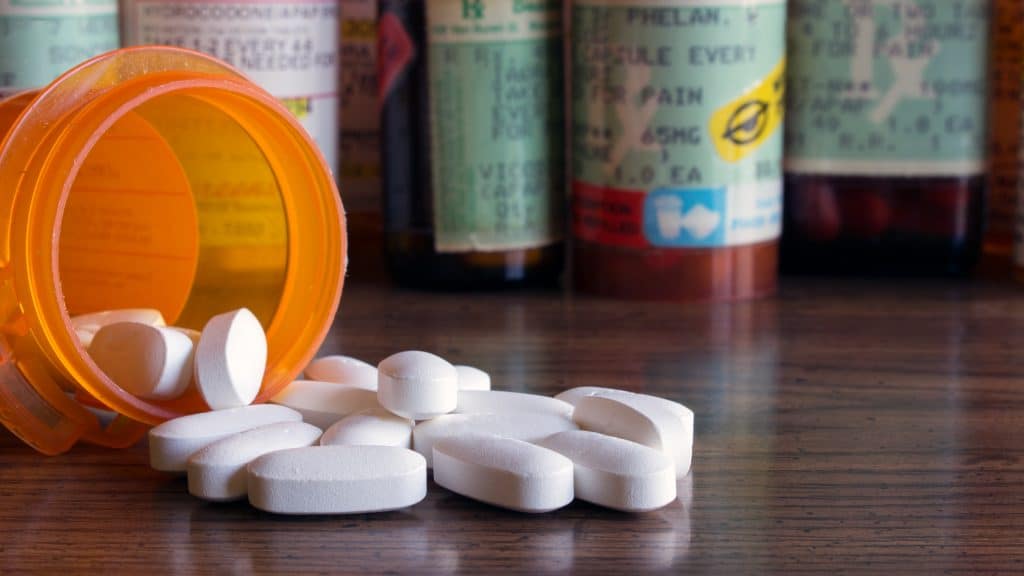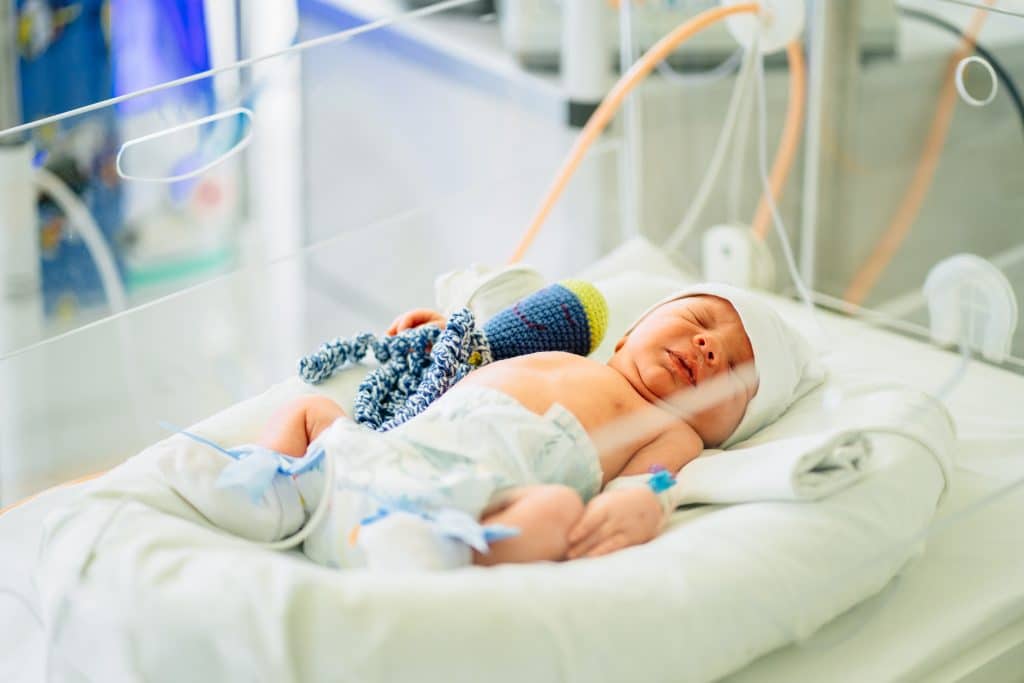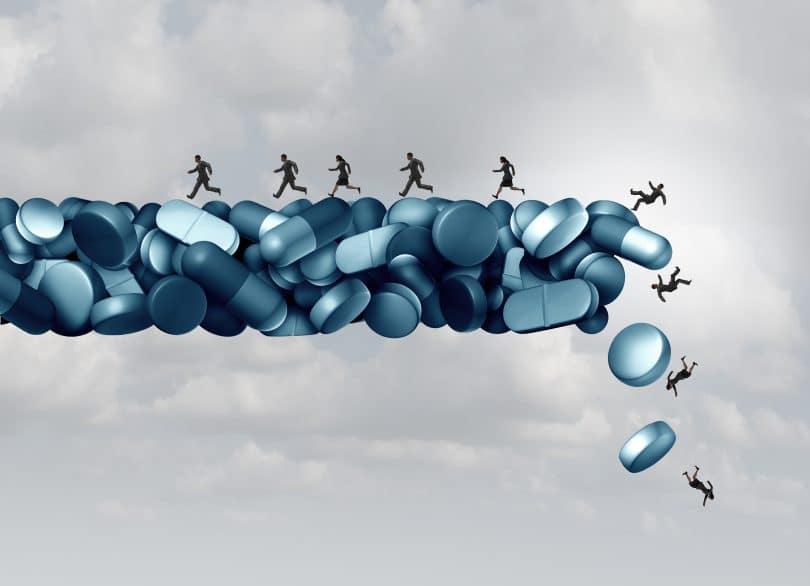We all know that pharmaceutical pain medications are much stronger than nearly anything you can find in nature. There’s no comparing cannabis, cloves, or magic mushrooms to powerful drugs like fentanyl and isotonitazene. So why are a growing number of people turning away from opioids in favor of milder treatment options? Aside from obvious safety issues with the former, the answer to that lies in part, in how we, as a society, view pain in the first place.
Is pain something that should be immediately and completely masked, or are there some healing components to allowing our bodies to feel discomfort? Is our culture of hiding from anything that feels bad, keeping us in a perpetual state of illness?
Pain & pain medications throughout history
Pain is not a condition in and of itself, but rather a symptom of many other diseases or disorders, indicating that something is wrong with our bodies. Pain is incredibly complex and can vary significantly between people, even those who share similar illnesses or injuries. Pain can also range in severity, as well as in the way it’s felt. Some variations of pain can include pricking, tingling, stinging, burning, soreness, aching, and many other unpleasant sensations.
The entire spectrum of pain consists of hundreds of different types of syndromes. For instance, you can experience pain following an injury, or chronic pain related to aging. Pain can also be neurological, like migraines. Heart attacks, cancer, and childbirth all cause different forms of pain as well. When it comes to clinical diagnoses, healthcare providers typically group pain into one of two categories: acute or chronic. Acute pain comes on suddenly and intensely, and is usually the result of a traumatic injury or surgery.
Chronic pain persists over a longer period of time, and can be difficult to manage. Chronic pain affects around 50 million American adults, and it’s one of the most common reasons people seek medical care. Although some medical professionals consider chronic pain to be its own medical disease, there is always an underlying cause.
Again, pain is our natural warning sign that something is not right. The purpose of feeling pain is to change our course of actions – be it limiting certain activities, eating different foods, doing certain exercises, and so on. It’s remarkably specific in letting us know what activities will further aggravate an area, and in preventing us from doing said activities.
Thank you for stopping in. Head over to the Cannadelics Weekly Newsletter for direct updates; and get access to awesome deals on cannabis buds, vapes, edibles, smoking devices and equipment, cannabinoid compounds, and some psychedelic products! Go get high responsibly!
What the research says
Pain is something that has long-confused physicians, so in an effort to better understand it, they started tracking their patients’ discomfort at all times. For a while, pain was even referred to as “the fifth vital sign”, officially declared so in 1999, but the move was met with great controversy and continues to be a point of contention in the healthcare industry to this day.
Regardless, the goal was for doctors to take more cognizance of pain because it can be an important factor in determining the overall health and mental state of a patient. The problem, was that the quest to gain a better understanding of pain eventually turned into a mission to mask pain entirely, not necessarily treat its root causes.
Some issues come along with the prolonged use of pain medications, the most obvious being that if you don’t feel any pain, you may not take the correct actions to manage and heal your ailment, leading to further injury. Another problem that is rarely discussed, is the role of pain management medications in the actual treatment of pain. For a long time, it was commonly believed that pharmaceuticals were helpful, but recent studies show that many frequently used prescription and OTC drugs can hinder the healing process.
It is well established in scientific literature that NSAIDs can impede the healing of broken bones, damaged ligaments, and other musculoskeletal tissues. Many surgeons many avoid suggesting or prescribing these medications because of growing concerns regarding how they negatively impact callus formation and decrease the activity of COX isoenzymes that decrease the synthesis of prostanoids.
Another drug of great controversy – opioids. How much are these incredibly dangerous drugs that have caused hundreds of thousands of overdose deaths over the last decade, even aiding in the healing process? Short answer, not very much at all – according to new research.
A study published in 2017 found that patients who were treating wounds with opioid doses over 10mg per day exhibited slower rates of healing than patients who took less than 10mg or none at all. Other studies have also suggested that opioid use may negatively impact wound healing in many different ways, such as reducing immune activation, impacting tissue oxygenation and angiogenesis, and altering myofibroblast recruitment as well as impacting keratinocyte cytokine production, endothelial proliferation and angiogenesis.

Other drugs that can slow wound healing are cytotoxic antineoplastic and immunosuppressive agents, corticosteroids, and anticoagulants. Additionally, all drugs in the pain relief category can theoretically interfere with healing by masking pain and thus allowing you to continue hurting yourself without immediately realizing it.
My personal experience with pain & pain medications
To not sound completely tone-deaf here, I do understand that certain levels of pain can make life unbearable. I’ve been blessed in not having to experience chronic, debilitating pain personally, but I have had a handful of injuries and surgeries in my life that left me in pain or discomfort for a few weeks to a few months at a time.
I also suffer from frequent migraines and cluster headaches, which come on strong and fast. Normally, I try to take it easy, drink a lot of water, eat food, and avoid smoking until it goes away. Admittedly, I’ll pop an Excedrin occasionally if I don’t have time to tend to naturally, but I try to avoid that as the regular use of any acetaminophen-based drug can cause significant damage to the body, particularly the liver.
Right now, I’m drawing from my experience of giving birth, comparing how it went when I received epidural versus a natural birth. First, it’s important to note that babies whose mothers receive an epidural are more likely to develop respiratory distress syndrome shortly after birth. Epidural anesthetic is sometimes combined with opioid drugs as well, which can cross the placenta and add to the risk of developing respiratory depression.
Babies who are exhibiting such problems often end up going to the hospital’s neonatal intensive care unit (NICU). While staying in the NICU may not seem harmful on the surface, it means that mother and baby are separated during a very crucial bonding moment. And when you use epidural, you can’t move your legs for a couple of hours after giving birth, so if the baby is not in the same room with you, that’s even longer spent away from them during their first moments on this earth. This can have profound effects on the emotional and physical well-being of both baby and mom.
This is what happened to me when I gave birth to my first son with epidural. The labor was about 10 hours, I had to be put on oxygen at numerous points during the process, and my baby was born with some breathing issues that made it difficult for him to breathe through his nose while eating. He was taken to NICU right away, but even while there he had issues for a couple of weeks. At one point during a feeding, he stopped breathing completely for a few seconds and turned blue, it was the most terrifying thing I’ve ever experienced.

Were these issues causes by the epidural? It’s hard to say, but very possible. Especially when comparing that ordeal to the birth of my second son, which was done completely naturally. No problems during the labor which last less than one hour from start to finish, baby had absolutely no issues, and we were discharged in about 1 day. In my opinion, that’s very telling of the types of complications that can arise when unnecessary medical intervention is at play.
Pain medications – Final thoughts
Pain medications, and pain management in general, is a complicated and sensitive subject for many people – patients and medical professionals alike. Pharmaceuticals have their place in modern medicine, but it’s important to take a closer look at their overall role in relieving pain over a longer period of time. These recent discoveries place greater importance on treating the root causes of pain, in order to get patients off their medications and back to normal as quickly as possible.
Thanks for joining us! Welcome to Cannadelics.com; where we work daily to bring you the very best in cannabis and psychedelics news reporting. Head our way frequently to stay in-the-loop, and sign up for the Cannadelics Weekly Newsletter, so you’re never late to get a story.









